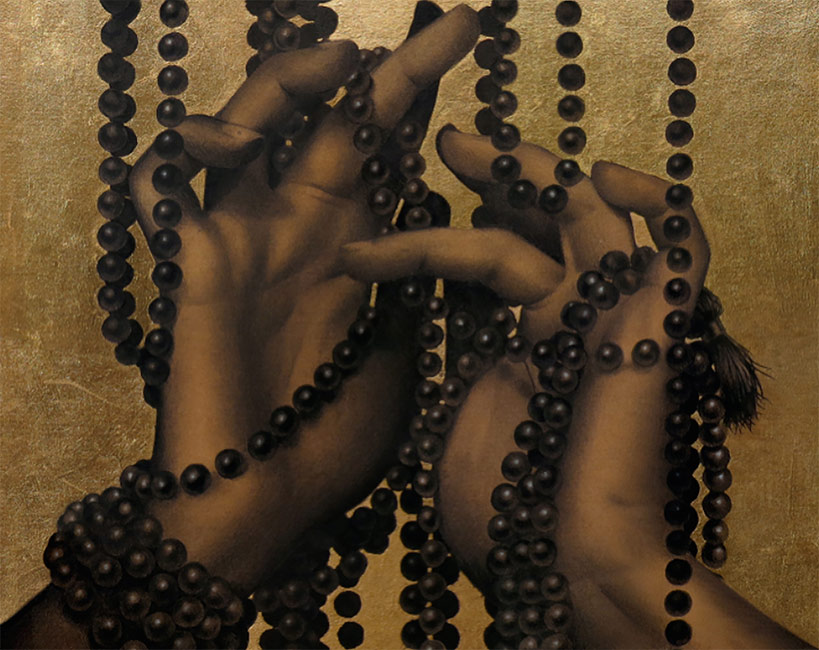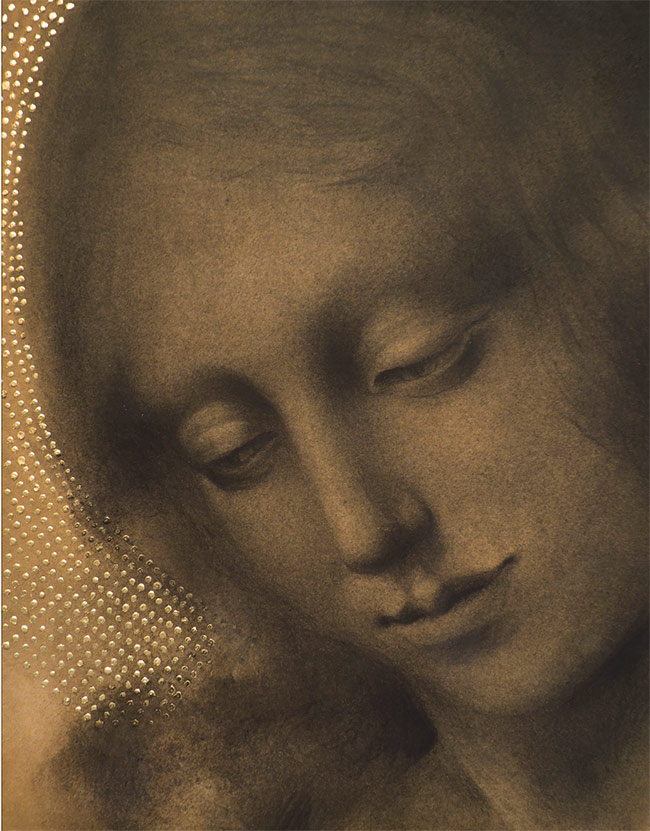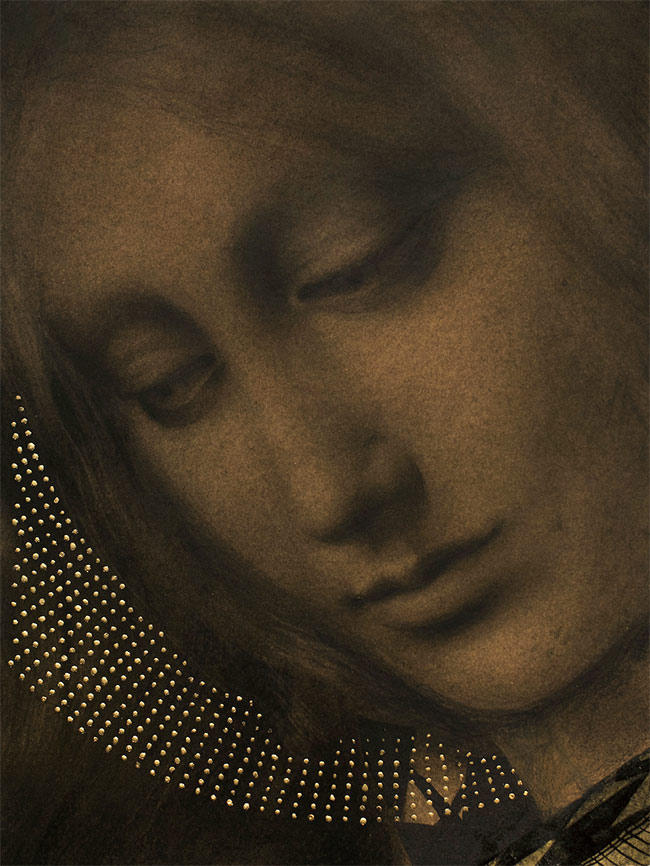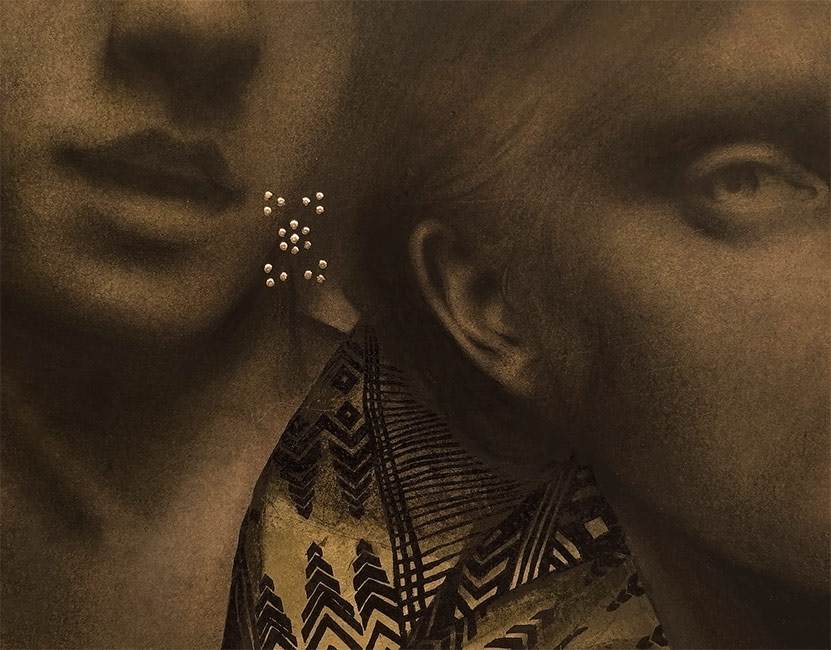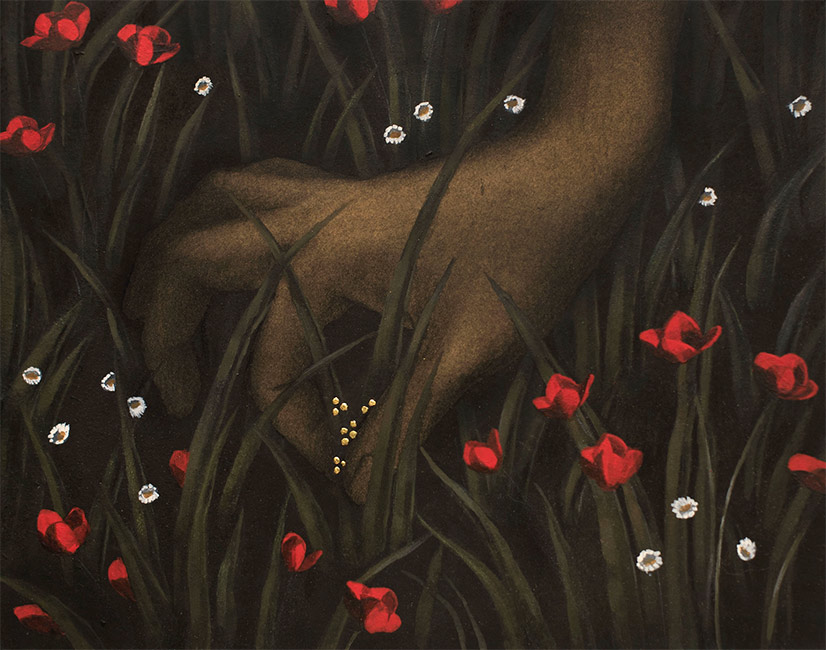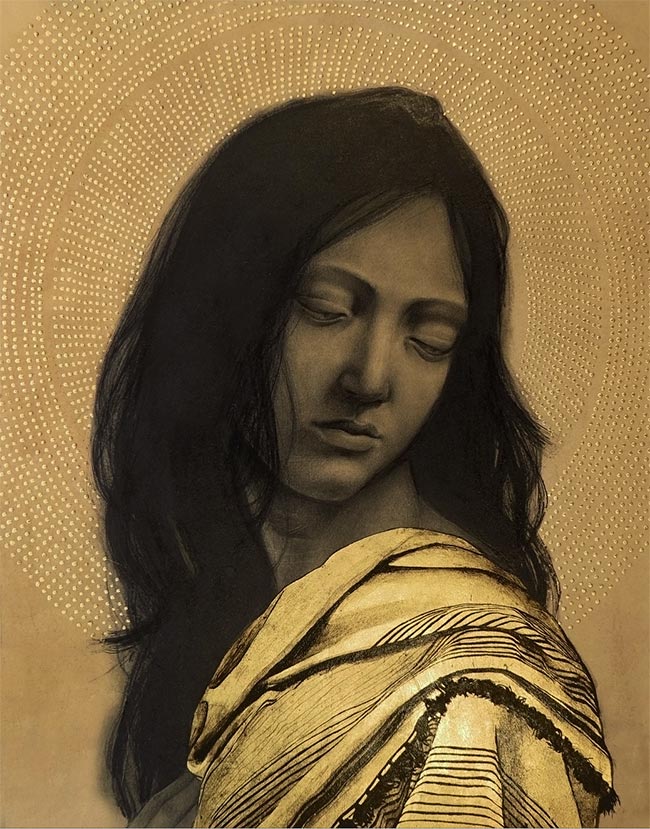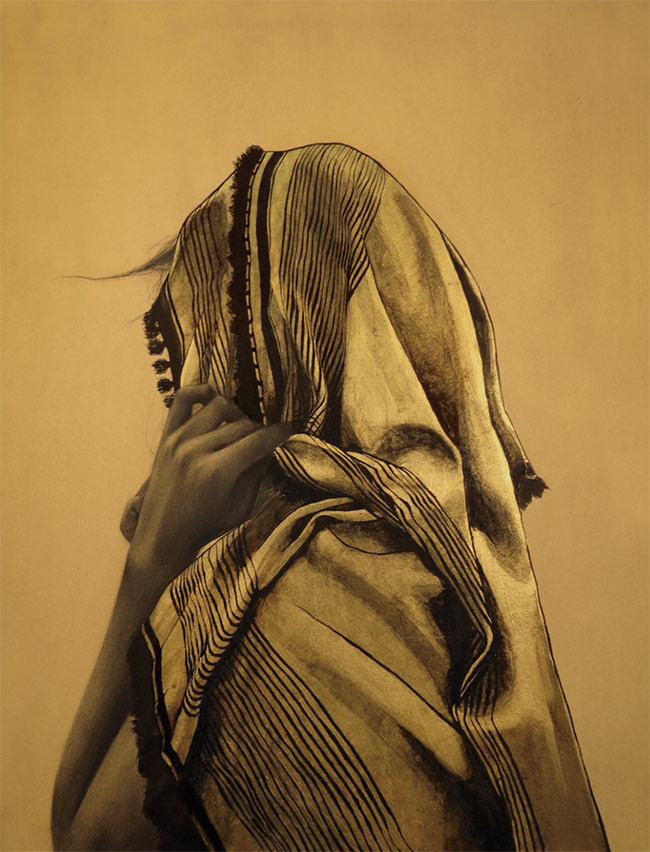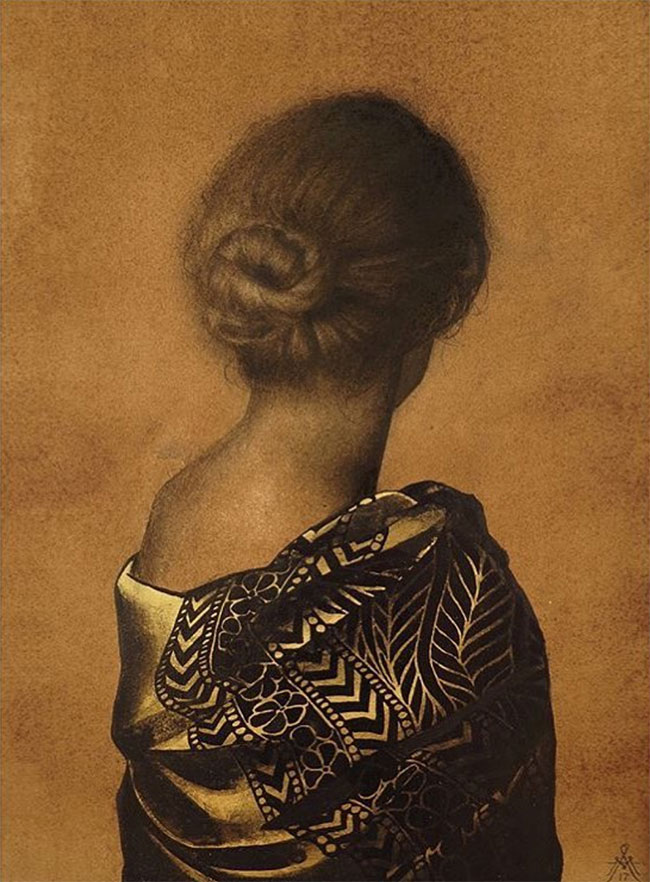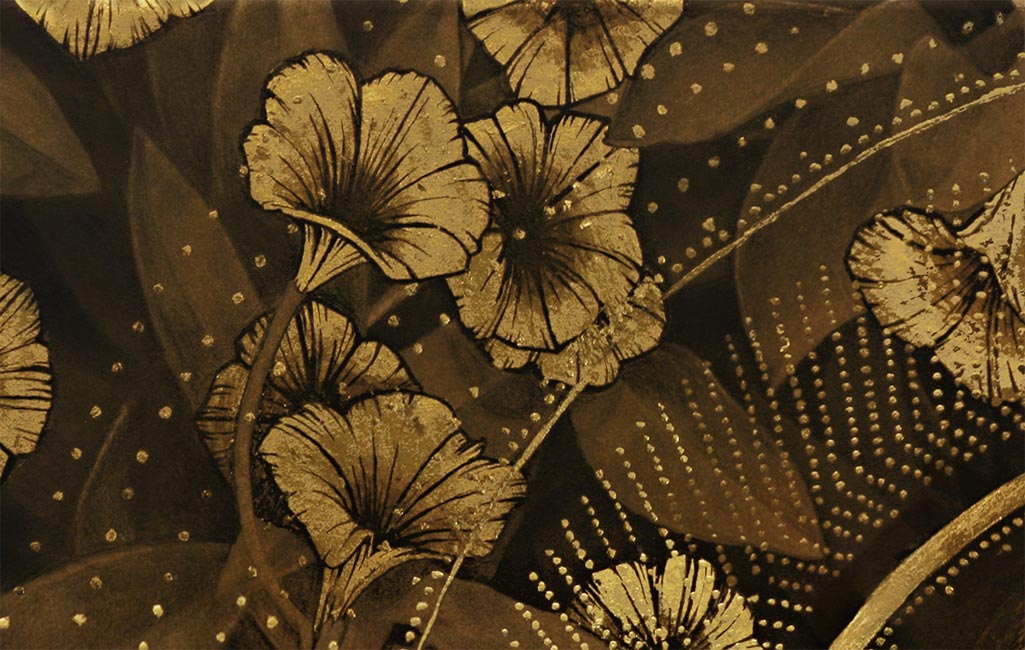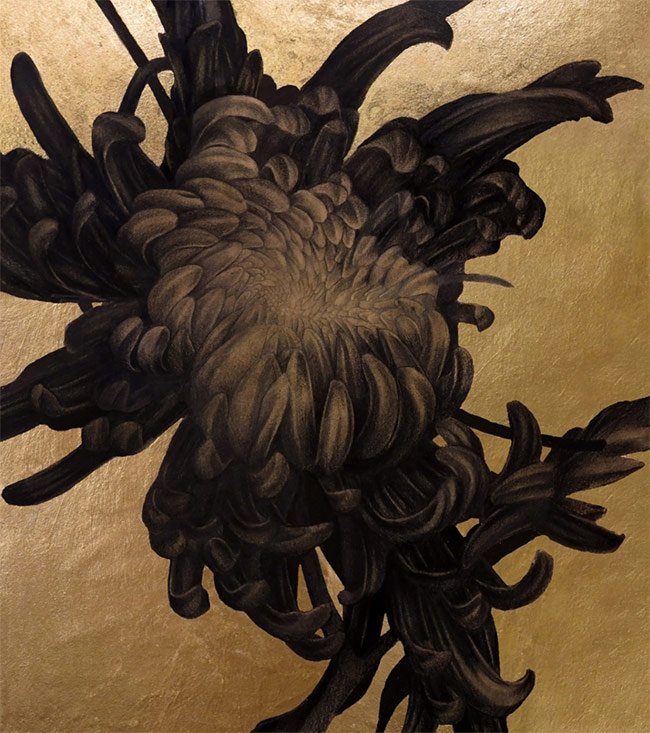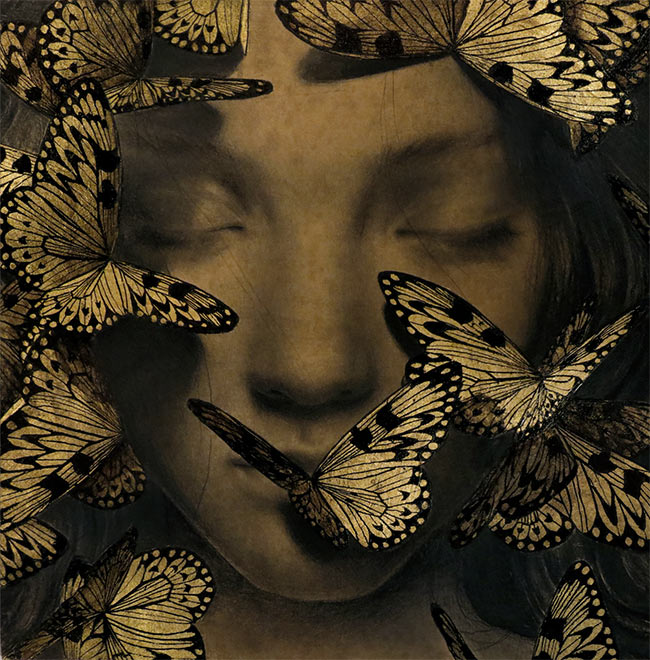Upon viewing the powerful iconographically informed artwork of Alessandra Maria, it quickly becomes apparent that there exists a distinct connection with the past, along with an incredibly potent relationship with the present. Maria’s personal experiences as a youngster in a Catholic all-girls school made such a long-lasting impression on her and in particular, her thoughts about the dissemination of concepts and the portrayal of societal, or more accurately patriarchal intentions, relating to women’s agency and sexuality throughout history and right into the contemporary era. Through a feminist re-contextualising of historical iconography, Maria addresses many of the ideals from the past that concern her, and projects an alternative representation of female power for the current millennium.
Alessandra Maria was born and raised in Seattle in 1989 and is now working in Brooklyn, New York. She graduated from Pratt Institute in 2012 with a Bachelor of Fine Arts in Communications Design and Illustration. In the short time since her graduation, Alessandra has built a seriously impressive CV, including solo exhibitions at Corey Helford Gallery and the late (but certainly not forgotten) Roq La Rue, along with numerous spots in group shows at the likes of Spoke Art, Modern Eden and Arcadia Contemporary.
WOW x WOW is most honoured to bring you this exclusive, not to mention, deeply insightful interview with Alessandra. We hope you enjoy reading about what has inspired this talented young artist to develop such wonderful subject matter and beautifully realised imagery.
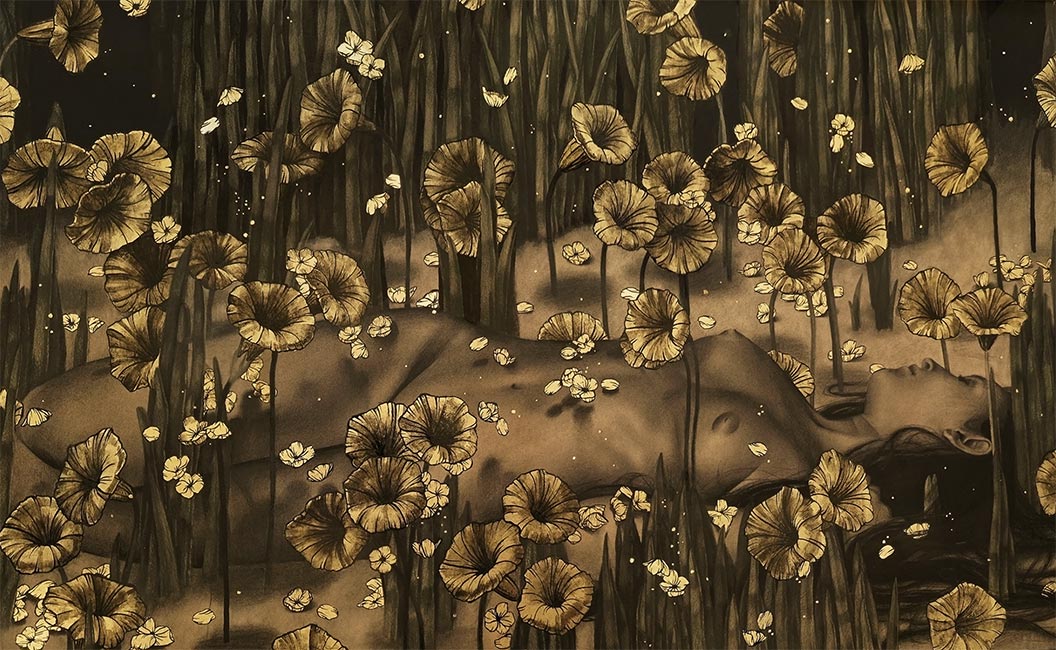
Hi Alessandra, thanks for taking the time out of your busy schedule to have this chat, we really appreciate it. To get us started, can you give us some background on what has lead you to this point in your professional life, be it your formal training, serendipity, etc.?
I think luck certainly does factor into it to a certain degree; I was lucky enough to be able to go to Pratt, to have a family that didn’t outright bar me from trying to pursue this path, to not have to care for ailing relatives or anything like that, in addition to a myriad of other factors.
I also was lucky to have a father who instilled a strong work-ethic in both myself and my brother. We were young when he started teaching us that your work is your self, and to do anything less than your best is short-changing the potential you’ve been given in this life.
Figuring out how to apply that to art was a learning curve; I think artists have to occupy this strange space between complete faith that they can reach their personal ideal, stubbornness to keep trying to do so, and a lack of ego when they inevitably fail over and over again. It’s like walking a razors-edge – don’t take it too personally when a piece fails (because you’re going to fail if you’re trying to do something new), but also take it so personally that you feel you must accomplish it eventually.
Maybe a more succinct way of putting it is devoted persistence.
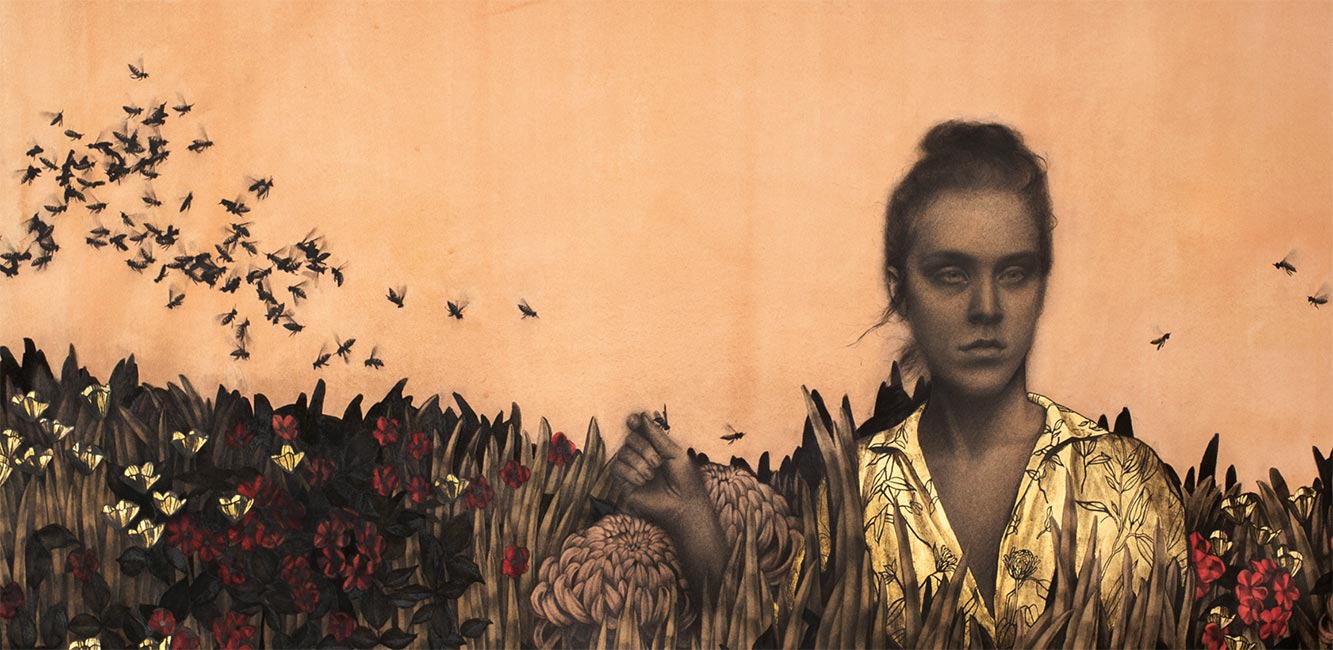
At the heart of your thematic content is the intention to address the role of female iconography within fine art; to recreate contemporary icons from a feminist’s perspective. Can you talk to us about the catalyst that started you in this direction, how you are currently approaching this aspect of your work and also discuss any revelations that have presented themselves along the way?
I went to a Catholic all-girls school when I was growing up, and it was simultaneously the best and most maddening thing. There are many beautiful things about the Catholic faith that manifested in my schooling; the teaching of morals in everyday subjects, the importance of loving your neighbor, even if they hurt you. The examples held up for us were Mary and Jesus, which is profound and powerful.
But, I found that the icon of Mary, the traditional example for young girls, was incomplete. I couldn’t put a finger on it when I was younger; I felt instinctively that she wasn’t fully human, and yet she represents what the ideal female has been for the past millennia. Quiet, modest, self-sacrificing, obedient, and… A vehicle solely for others; the virgin mother. There is no action in her virtue, almost no agency; even the moment she made the biggest choice of her life, to sacrifice her son, she demonstrated obedience as opposed to agency: “Thy will be done”.
But, this is not a new idea. Simone de Beauvoir talked about it three quarters of a century ago. Yet, despite the work of her and many other feminists, the problem remains.
As a 14-year-old trying to find myself, I was frustrated that the source of her virtue was her lack of sexuality and agency; we were presented with her as an ideal to counter the influence of more prominent pop cultural icons at the time (Paris Hilton, in my day – culturally portrayed as the “whore”, so Mary the “virgin” was fervently presented in contrast. Now we have the Kardashians.)

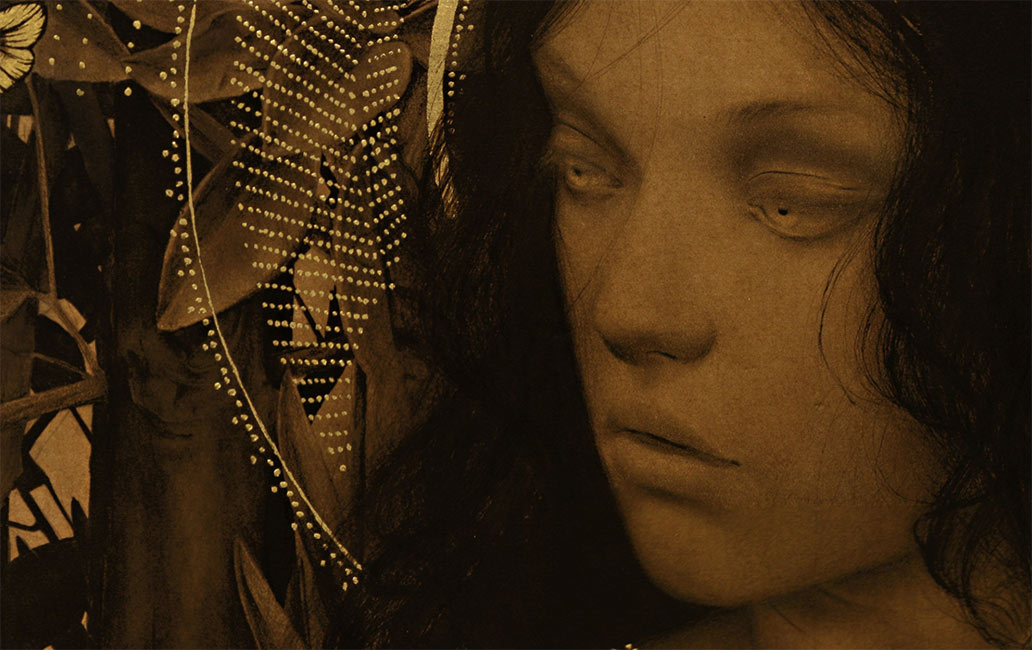
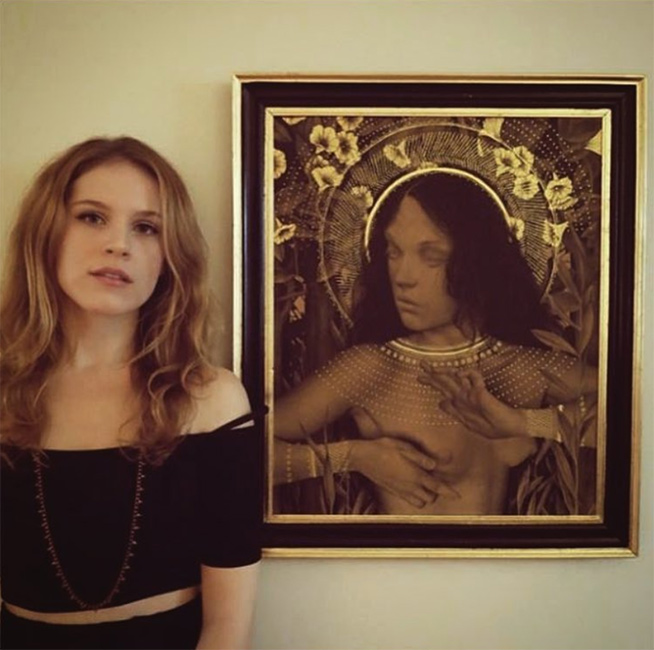
So – we get to icons. As you know, icons communicate ideals, they communicate what we should strive to be. They communicate what we as a society value.
What I’m essentially trying to do is intervene in historic iconography, and to make my own icons. I’m going back to the start of what I had felt a long time ago and addressing that problem. I want to create a sense of agency and power outside of the typical power-structures women occupy, where they’d be seen primarily through a sexual lens (whether whore, mother, or madonna); icons where their humanity feels more weighty and real than anything else.
While I’m personally not Catholic, I feel these images need to exist as a different portrayal of female power in the world. Fundamentally, I make these icons for myself, but I hope they resonate with others.
I should also add however, that I have started to dabble in new bodies of work with new explorations, completely unrelated. I think it’s important to pursue one’s interests wherever they may lead, and recently I’ve been finding myself absorbing everything I can on “magical realism”. I think I’m trying to get in touch with my inner child, who loved that sort of thing deeply. I find myself wondering why it was so fascinating to me at a young age, and in the process of exploration I’m becoming enthralled with it all over again.
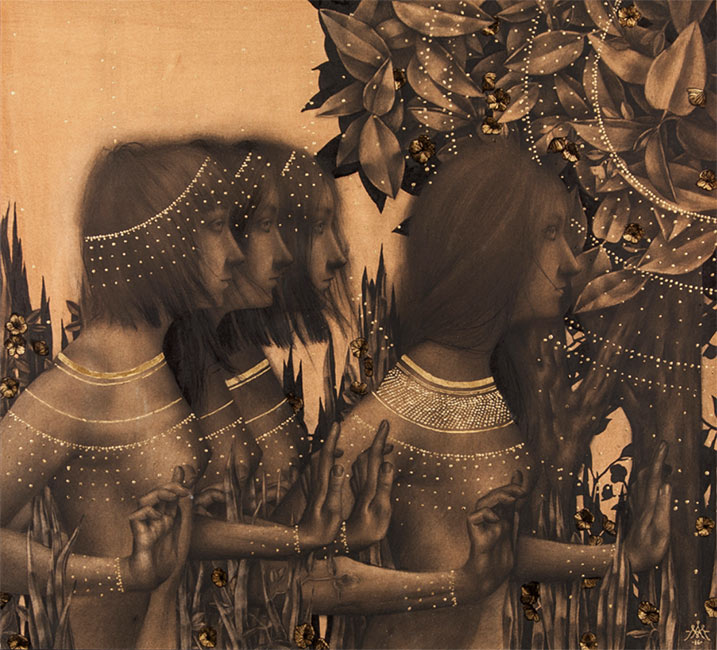
Sticking with feminism for a moment… as an artist and a person to whom feminism is an important philosophy, we’d love to hear about your thoughts on progress (or lack of) concerning women’s rights.
Regarding progress concerning women’s rights, I’ve personally been buoyed by the Metoo movement.
We have a long, long way to go (especially in the intersectional arena), but this recent development has been very inspiring.
We’re interested to hear about the symbology you employ in your work. Do you tend to borrow from the lexicon of art history and re-contextualise those symbols, or do you prefer to apply your own personal meaning onto your motifs?
I do a combination of the two; I really want the work to feel like a sacred encounter, so I do borrow some devices from Renaissance art in particular. But I don’t think it’s useful to just copy point-blank, so I find elements from my own environment to bring into the work. I’ve always liked the idea of a comforting darkness, a darkness that feels safe instead of threatening, like being under the covers when you were a child. Presenting the unknown, but in your heart, you know it is safe.
Using a brown toned paper helps impart that sense of warmth, and in certain pieces I’ll let foliage recede to black in a way that feels safe to me, like being in a hidden grove.
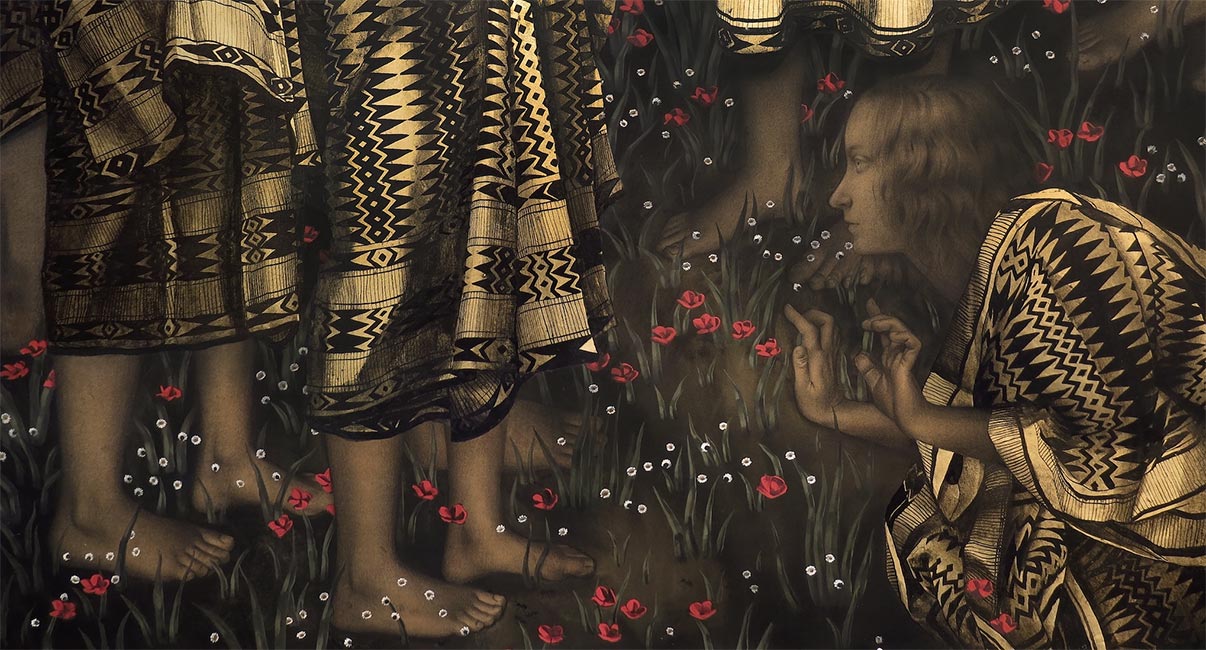
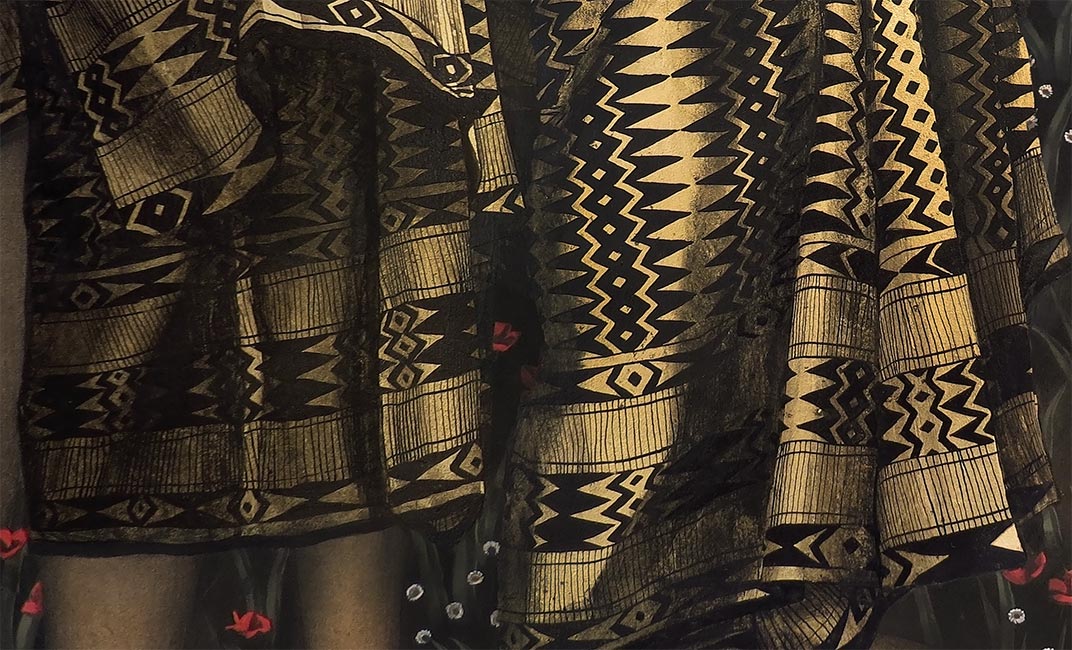
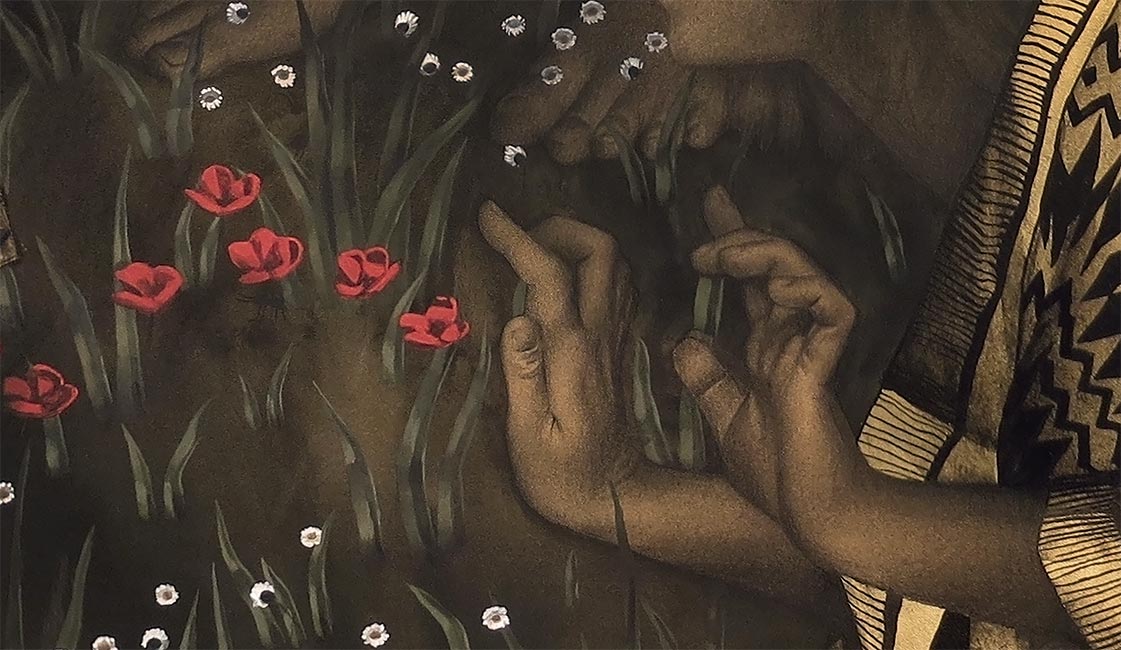
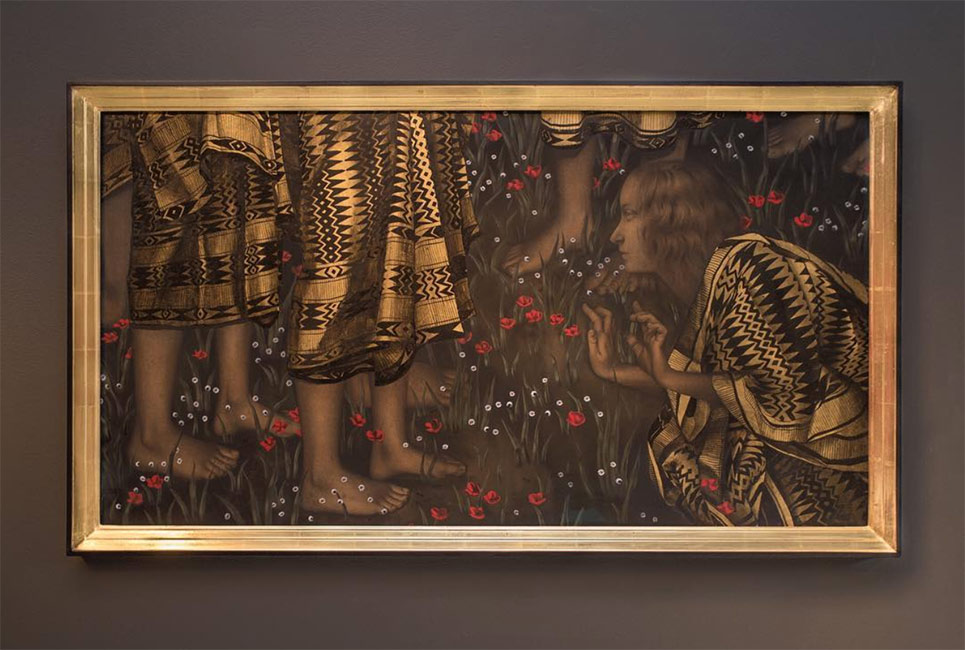
Your technique and materials are integral to the visual aesthetic you’ve developed. How much do these two elements impact the planning of your creations? We’d love to hear how the creative process works for you.
They affect everything; I tend to believe limitation can bring about the most interesting work, so I work with a very confined palette and roster of materials. To be frank, I came into this way of working because I’m total garbage with painting; I really can’t do it for the life of me. I do watercolor on the side sometimes, but nothing good enough to show anywhere (yet).
Because my materials are so limited, I have to come up with creative ways to make the piece feel finished and complete.
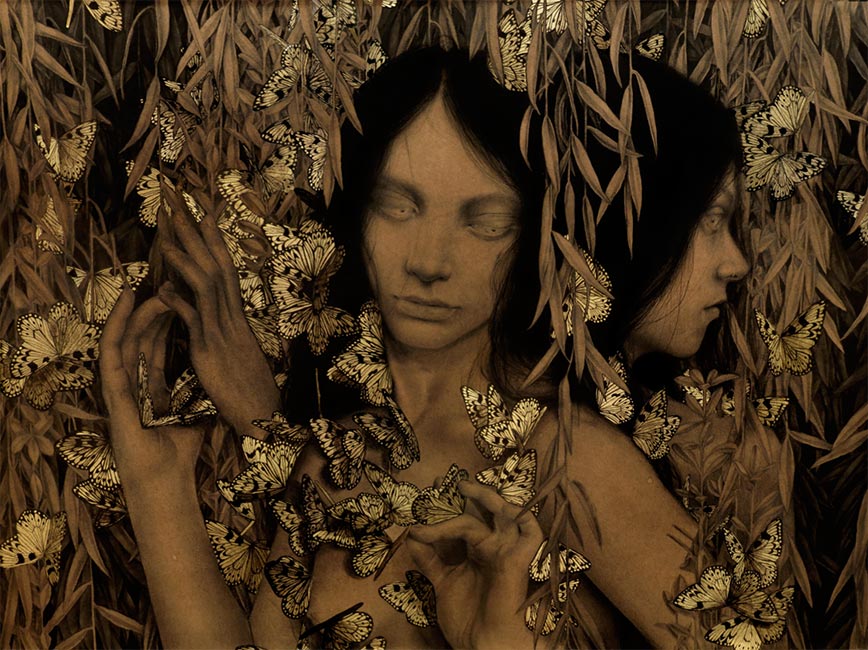
What have been some of the greatest breakthroughs you’ve experienced within your learning as an artist? Those moments that have opened up whole new creative avenues or that have led to you taking large leaps forward in your development?
When I was a sophomore in college, my parents’ 20-year-old business went under; there was a question for a while as to whether I would be able to stay in school. Thankfully, I was able to finish my schooling, but I went from not worrying too much about money, to out-of-nowhere not having enough money for a simple metrocard (despite having a job).
But worst of all, I watched the death of my parents dream and the accompanying grief, saw the difficult decisions they had to make, the strain of it all on our family, and their iron resolve to put on a facade for my brother and I of: “we are doing fine kids, focus on your studies.” They did everything in their power to sacrifice and ensure my brother and I were affected as little as possible (though of course there was only so much they could do).
I think the shock of that moment compelled me to re-evaluate what I really wanted from life, who I wanted to be and what I wanted to try and contribute. This time period also coincided with my first encounter with ‘Portrait of Adele Bloch Bauer’ in the Neue Gallery by Klimt. I remember seeing it and saying to myself “you’re allowed to do that?” I think I sat in front of it for an hour. It was at that moment that it clicked, and I decided to really, seriously dedicate my entire life to art.
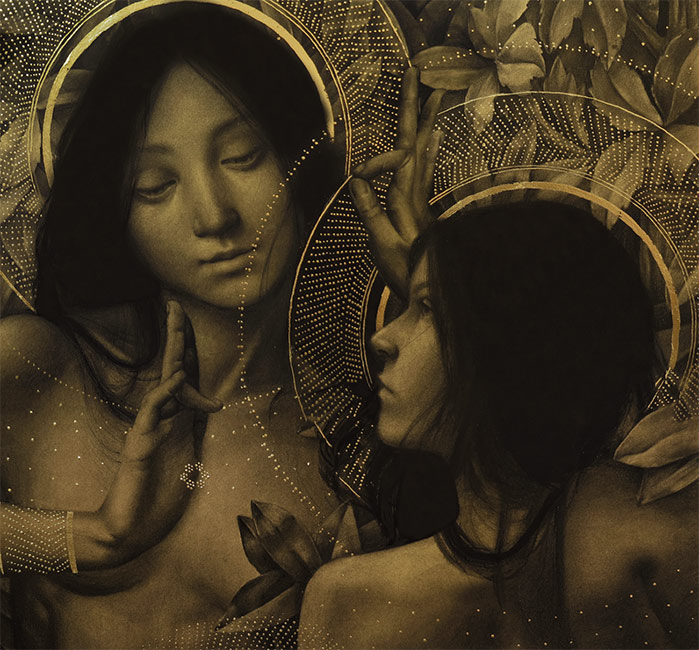
As we move through life we continue to grow and change. In what ways have you seen your work evolve since you started down the path of being a professional artist?
I think I’ve become more driven by my statement, and gained more clarity of who I am. When I was younger, I was simultaneously coming to terms with being bisexual, and that tinged some of the work in divergent and confusing ways. It makes sense, I was confused myself. But something has clicked the past couple years, and I know exactly what I want to make, and how to make it.
Also, my drawing has finally solidified. For years it was just like pulling teeth, trying to draw at a certain level; it never came naturally. I would spend hours on something, and later have to scrap it because it wasn’t good enough. But now I finally feel confident in my abilities. I have to say, it was a really cool moment, the first time I drew a portrait without breaking a sweat. I felt like I had been building up to it with a decade of practice, and one random day in the studio it just came forth easily. I couldn’t believe it, I actually danced around when I realized what had happened.
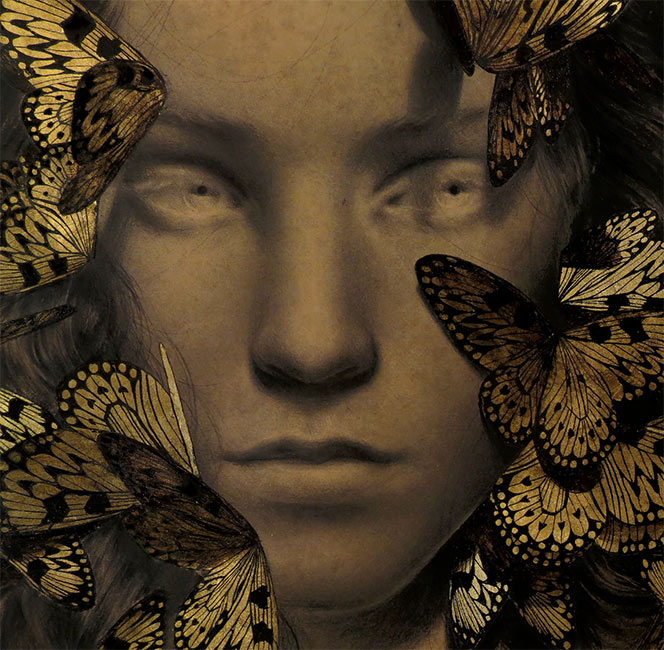
What are the best and also the worst pieces of advice that you’ve ever been given about your art or career?
Oh, that’s a good question. Hmm.
For the good advice, one of my teachers Kenichi Hoshine told me to never, ever let anything out of your studio that you’re not proud of. You should only put excellent work out into the world.
Another teacher of mine named Rudy Guttierez used to say “Produce! Produce!” only to me in class because I work at a glacial pace. He was totally right, and I didn’t realize what he was getting at until I was in the professional realm.
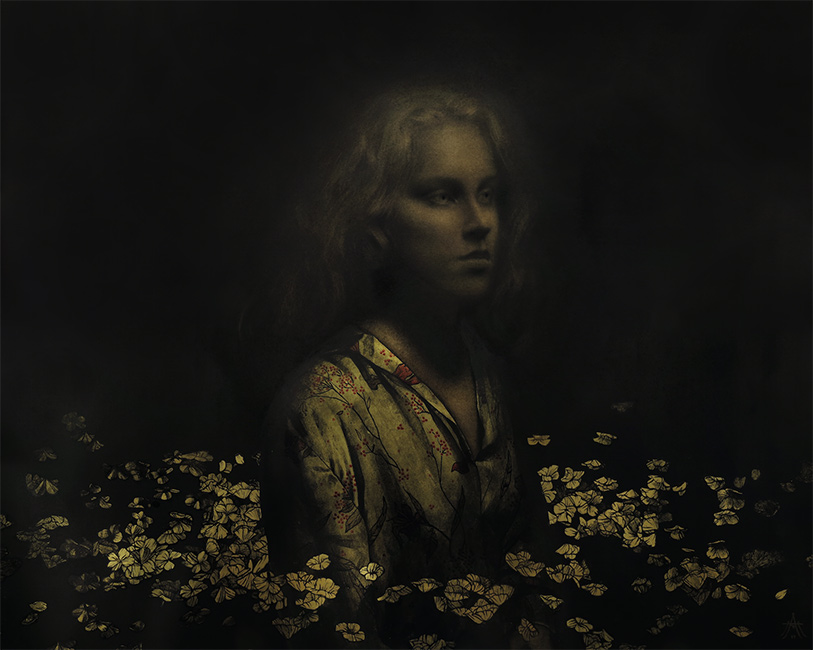
For bad advice… There’s a lot out there. I was seriously told by someone that I shouldn’t even try to be an artist, because I’d just fail (I think a lot of artists are told that frequently, of course). Someone else told me real artists don’t use photo references, which is likewise BS.
People seem to make up a lot of “gateways” for themselves and others to differentiate a “real” artist from a “fake” one. When I was a waitress, I had one person express skepticism when I called myself an artist. They said: “No, you’re a waitress who makes art on the side”. I think that mindset is pretty common; I felt an odd combination of anger and shame when this person said this to me, because deep down I felt it was true.
But after a while I started to sincerely believe that if you’re making precisely what you feel you need to, ignoring all advice, trends, and pressures that don’t serve you, that makes you an artist, regardless of your day job. What makes you a professional artist is when you do that, and you work consistently, even when you don’t want to.
I think it was Chuck Close who said, “Inspiration is for amateurs, the rest of us just show up and get to work.” I couldn’t agree more. You become a professional artist regardless of your day job; it’s your steadfastness to your vision, and how consistent you are in working that defines you.
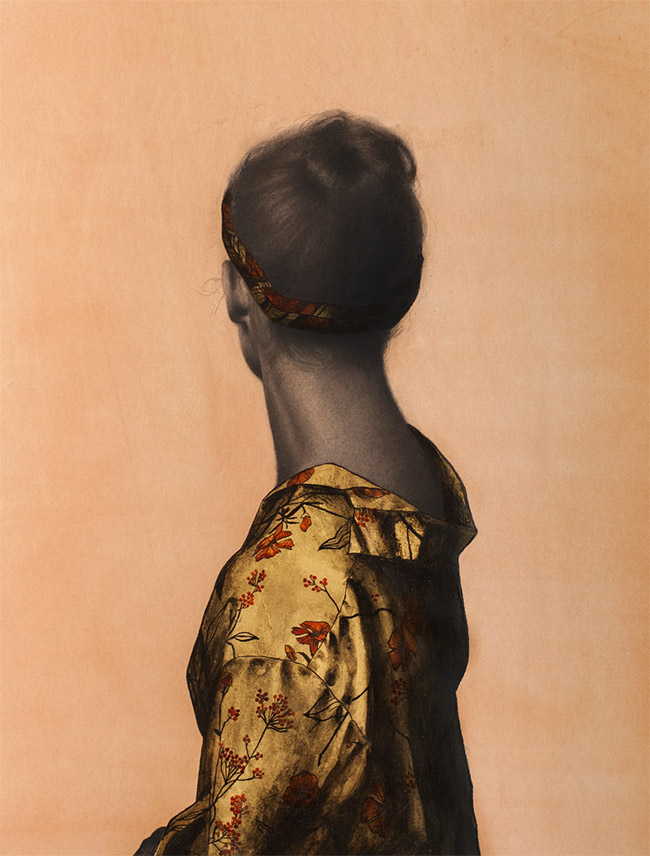
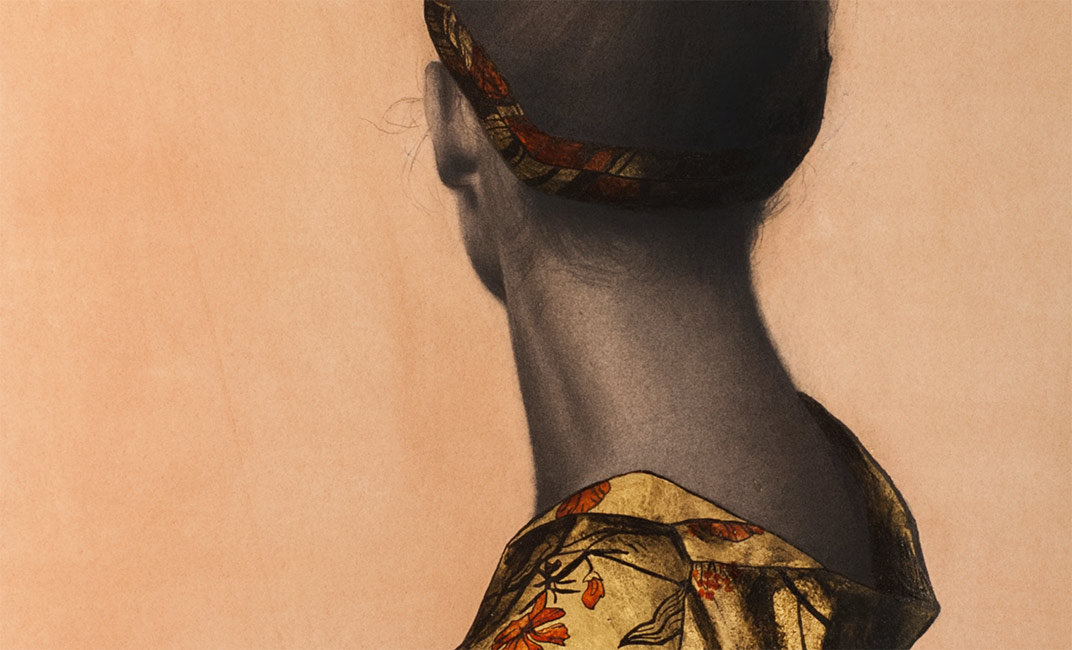
Where does your sense of community stem from as an artist? Do you feel part of a close-knit scene in your home city, or do you connect more with other creatives online? Is community something that is important to you and your creativity?
It’s something I wish I had more of, to be honest! When I was living in New York, there was a robust community, and of course I had all my friends from college which was wonderful.
But since I’ve moved to Maui, there isn’t quite the same level of community as there was in Brooklyn. It’s a double-edged sword, because I’m just focused totally on what I’m doing, and not as connected with what’s getting attention in Chelsea or the LES. That’s really nice, to be honest.
But it also means there’s not nearly as many people with which you can discuss problems, career choices, etc.
I think I’d like a good creative community eventually, but I’m still detoxing from the wildness of New York, and the pace of it. It’s really a relief to not be constantly bombarded with what’s cool this week and the next.
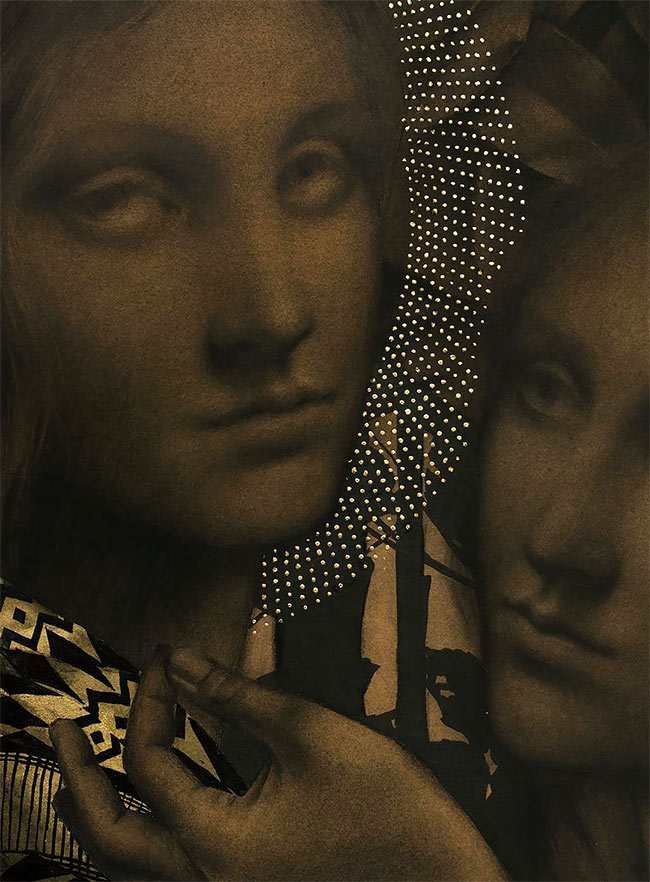
In order to get a better understanding of the personality of an artist, it can help to get a peek behind the curtain. Would you be willing to share a story from your own life, possibly one whose memory you find yourself returning to for inspiration, or maybe just a tale about a hardship you’ve overcome which has helped define the person and therefore artist that you are now?
Well, the story about my parents business and Klimt is still impactful.
There is more of a general thread throughout my career of what I feel I’ve had to learn: that of trying my absolute hardest and failing, then getting back up and trying again. Over, and over, and over again. I’ve started to think of it in my head as “the noble failure”, because it’s quite painful, but it’s also profoundly humbling and growth-inducing.
Most people don’t know of these failures, but they’re often botched pieces, overreaching visions for work, attempts of working with a medium that just doesn’t cut it. I have worked for 6 months on shows with almost no sleep, just doing day after day after day in the studio and trying my hardest to meet my vision, and only after framing the work do I step back and know it didn’t quite get there. I can tell you – that’s painful.
But each time I fail, I make an additional step closer to my goals, so long as I learn from it. That’s where the beautiful part of the whole process lies. It’s fundamentally a process, not a destination, and so long as I see it like that, it makes failure ok.
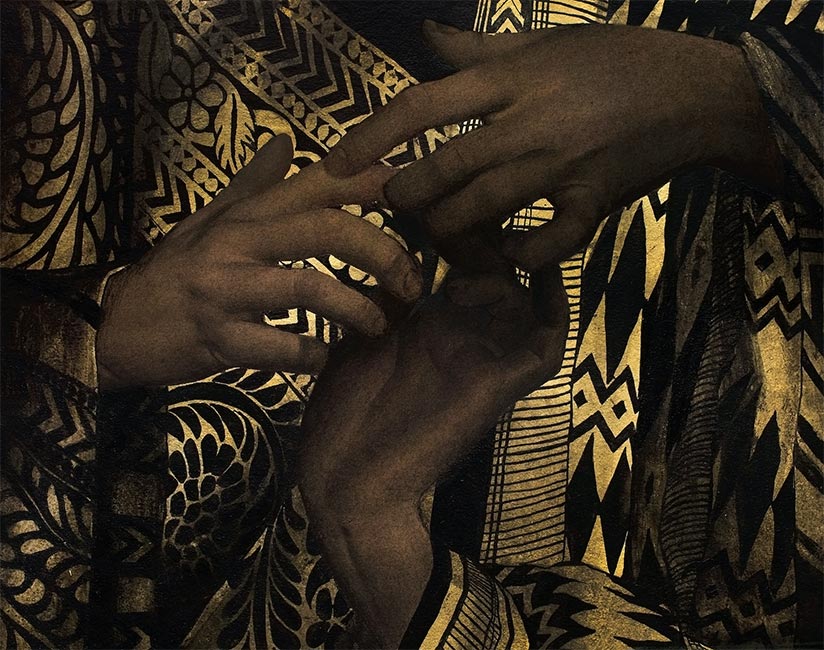
If you could own one piece of art from any of the world’s collections what would it be and why?
Oh man. Well, of course Klimt’s ‘Portrait of Adele Bloch Bauer’. Or, Leonardo’s ‘Burlington House Cartoon’, or his ‘The Virgin and Child with St. Anne’. For more contemporary work, I’ll take Fuyuko Matsui’s ‘Becoming Friends with All the Children in the World’.
What’s next for Alessandra Maria?
Many things! Many shows! More work! And maybe learning to surf if I can get around to it, while Matt and I live in Maui. Kiteboarding would be amazing too! But I don’t think my health insurance is good enough for me to learn to do that. Not yet, at least.
